World Health Organization Official Global Health Days-Datelines
The World Health Organization (WHO) has designated many internationally recognized health awareness days to raise awareness about important public health concerns and encourage global action. These observances, which are officially recognized by the WHO, are a powerful way to raise awareness of issues affecting health and well-being around the world, promote collaboration, and impact meaningful change. These days, individuals, communities, companies, and governments come together with a shared objective to address pressing health needs by focusing on specific areas, which may include infectious diseases, mental health, and environmental challenges. Through lobbying, education, and coordinated efforts, WHO Global Health Days aim to inspire policies, gather resources, and enable people to take action toward a healthier, more just world.
World Health Day – April 7
World Health Day, observed annually on April 7, commemorates the establishment of the World Health Organization (WHO) in 1948. This globally recognized occasion serves as a pivotal moment to shine a spotlight on a pressing public health issue of international significance, chosen each year to reflect urgent global health priorities. Themes in recent years have tackled challenges such as universal health coverage, mental health, climate change and its impact on health, and the prevention of non-communicable diseases.
The day galvanizes action across diverse sectors, uniting governments, policymakers, health organizations, civil society, and communities in a collective effort to address these critical issues. Activities on World Health Day are wide-ranging and impactful, including high-level advocacy campaigns, educational seminars, policy dialogues, and grassroots initiatives. These efforts aim to raise awareness, dispel myths, and promote evidence-based solutions to improve health outcomes. From organizing free health screenings to launching media campaigns and hosting global webinars, stakeholders leverage this day to inspire behavioral changes, influence health policies, and advance equitable access to care.
By fostering collaboration and mobilizing resources, World Health Day empowers individuals and institutions to take concrete steps toward healthier societies. It underscores the importance of solidarity in tackling global health challenges and reinforces the WHO’s mission to ensure that everyone, everywhere, can attain the highest possible standard of health.
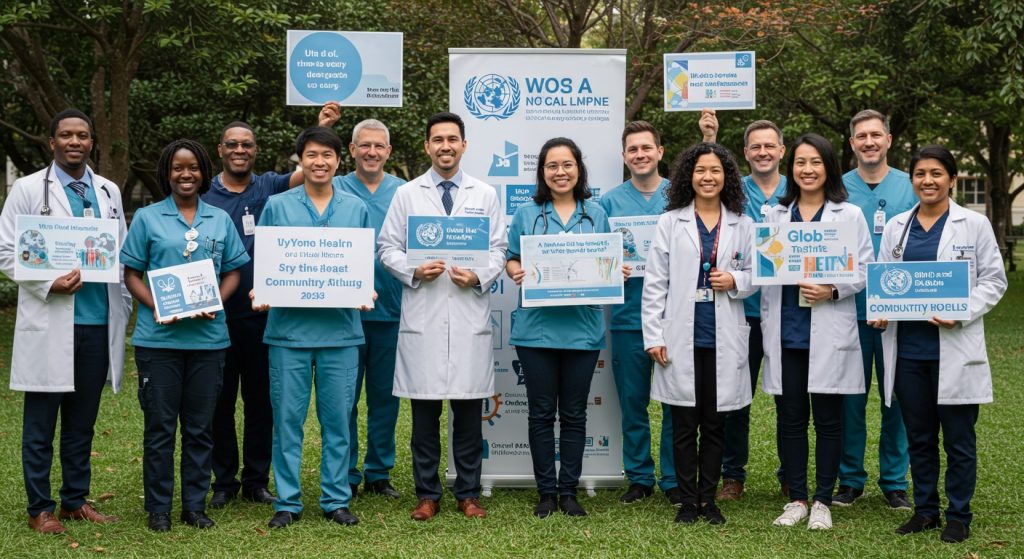
World Tuberculosis Day – March 24
World Tuberculosis Day, observed annually on March 24, marks the historic moment in 1882 when Dr. Robert Koch announced his discovery of *Mycobacterium tuberculosis*, the bacillus responsible for tuberculosis (TB). This groundbreaking achievement laid the foundation for diagnosing and treating one of the world’s deadliest infectious diseases, transforming the fight against TB. Each year, this day serves as a powerful call to action, rallying global efforts to raise awareness about the profound health, social, and economic toll of TB and to accelerate progress toward its elimination as a public health threat by 2030, in line with the United Nations Sustainable Development Goals and the WHO’s End TB Strategy.
Tuberculosis remains a major global challenge, claiming millions of lives annually, particularly in low- and middle-income countries, and disproportionately affecting vulnerable populations such as those living with HIV, malnourished individuals, and communities with limited access to healthcare. World Tuberculosis Day underscores the urgent need to address these disparities by promoting equitable access to prevention, diagnosis, and treatment. It highlights the devastating consequences of TB, including its role in perpetuating poverty due to lost productivity, high medical costs, and social stigma, which often isolates those affected.
The day galvanizes a wide range of activities worldwide, including public awareness campaigns, community outreach programs, and high-level policy discussions. Health organizations, governments, and civil society groups organize events such as free TB screening drives, educational workshops, and media campaigns to dispel myths and encourage early detection. Each year, the WHO selects a specific theme—such as “Invest to End TB. Save Lives” or “The Clock is Ticking”—to focus global attention on critical aspects of the fight, from increasing funding for research to scaling up innovative diagnostic tools and treatments like shorter, more effective drug regimens.
World Tuberculosis Day also celebrates progress, such as advancements in rapid diagnostics and new vaccines under development, while emphasizing the need for sustained political and financial commitment. It calls for multisectoral collaboration to tackle underlying drivers of TB, including poverty, overcrowding, and inadequate healthcare infrastructure. By fostering solidarity and innovation, this day inspires individuals, communities, and leaders to unite in the global movement to end TB, ensuring no one is left behind in the quest for a healthier, TB-free world.
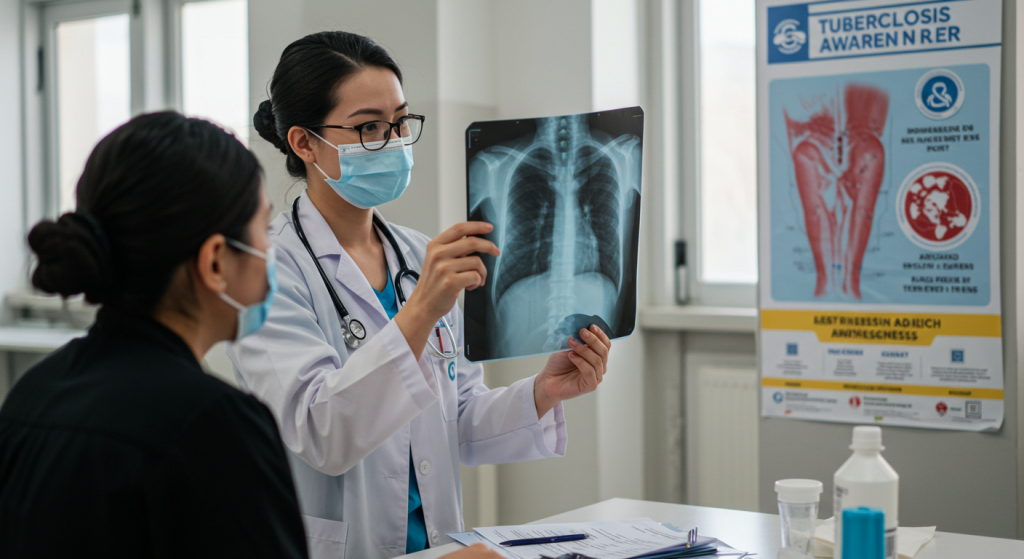
World Malaria Day – April 25
World Malaria Day, observed annually on April 25, stands as a critical global platform to amplify efforts in the fight against malaria, a preventable and treatable disease that continues to exact a devastating toll, claiming hundreds of thousands of lives each year. Predominantly affecting sub-Saharan Africa, where the majority of cases and deaths occur, malaria disproportionately impacts vulnerable populations, including young children, pregnant women, and communities with limited access to healthcare. This day, endorsed by the World Health Organization (WHO), serves as a rallying point to raise awareness about the urgent need for enhanced prevention, timely diagnosis, and effective treatment, while galvanizing stakeholders to accelerate progress toward the ultimate goal of eradicating malaria worldwide.
World Malaria Day highlights both the remarkable strides made in combating the disease and the persistent challenges that remain. Over the past two decades, global efforts—such as the distribution of insecticide-treated bed nets, indoor residual spraying, rapid diagnostic testing, and access to artemisinin-based combination therapies—have significantly reduced malaria cases and deaths. Innovations like the first WHO-recommended malaria vaccines have further bolstered hope. Yet, emerging threats such as drug-resistant malaria parasites, insecticide resistance, and funding gaps continue to hinder progress, particularly in high-burden regions. The day underscores the need for sustained investment in lifesaving tools, research, and innovation to overcome these obstacles.
Each year, World Malaria Day adopts a specific theme, such as “Zero Malaria Starts with Me” or “Time to Deliver Zero Malaria,” to focus global attention on key priorities, from community empowerment to strengthening health systems. Activities worldwide range from high-level policy forums and scientific conferences to grassroots initiatives, including community clean-up campaigns to eliminate mosquito breeding sites, educational programs to promote preventive behaviors, and advocacy drives to secure political and financial commitment. Governments, health organizations, researchers, private sector partners, and civil society collaborate to share best practices, showcase innovations, and mobilize resources.
Beyond raising awareness, World Malaria Day emphasizes equity and inclusion, advocating for stronger healthcare infrastructure in underserved areas to ensure access to quality diagnostics and treatments. It also highlights the intersection of malaria with broader issues like poverty, climate change, and gender disparities, which exacerbate vulnerability to the disease. By fostering global solidarity and encouraging collective action, this day inspires individuals, communities, and leaders to take ownership of the fight against malaria, driving momentum toward a future where no one dies from this preventable disease.
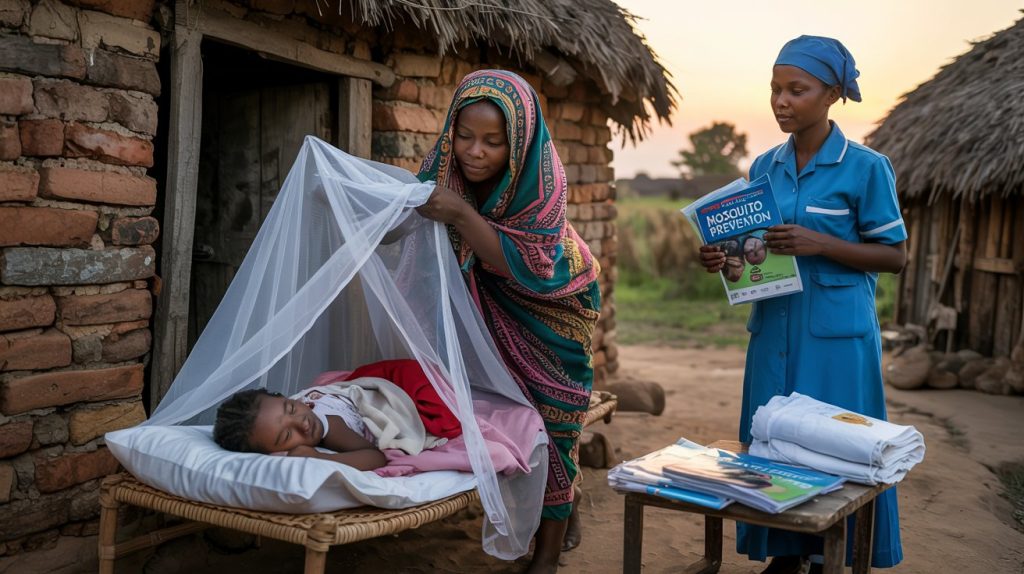
World No Tobacco Day – May 31
World No Tobacco Day, observed annually on May 31, serves as a powerful global platform to highlight the devastating health, social, and economic consequences of tobacco use, while exposing and countering the aggressive marketing strategies employed by the tobacco industry. Endorsed by the World Health Organization (WHO), this day aims to raise awareness about the preventable deaths and diseases caused by tobacco—responsible for over 8 million deaths annually, including those from secondhand smoke exposure—and to advocate for robust policies and actions to curb its consumption. It is a rallying call to protect current and future generations, with a particular focus on empowering youth to resist tobacco-related influences and fostering environments that promote healthier choices.
Each year, World No Tobacco Day centers on a specific theme, such as “Protecting Youth from Industry Manipulation” or “Commit to Quit,” to address critical aspects of the global tobacco epidemic. These themes guide worldwide campaigns that educate communities about the dangers of tobacco products, including cigarettes, smokeless tobacco, and emerging threats like e-cigarettes and heated tobacco products. The WHO and its partners use this occasion to debunk myths propagated by the tobacco industry, which often targets vulnerable groups, including young people and low-income communities, with deceptive advertising and product innovations designed to normalize tobacco use.
Activities on World No Tobacco Day are diverse and far-reaching, encompassing public awareness campaigns, policy advocacy, and community engagement. Governments, health organizations, schools, and civil society groups organize events such as anti-tobacco rallies, educational workshops, and media campaigns to inform people about the risks of tobacco use, including its links to cancer, heart disease, stroke, and respiratory illnesses. The day also promotes cessation, encouraging smokers to quit through access to counseling, nicotine replacement therapies, and digital support tools. Success stories of individuals and communities that have embraced tobacco-free lives are highlighted to inspire others.
A key focus of World No Tobacco Day is advocating for evidence-based policies to reduce tobacco consumption. The WHO calls on governments to implement measures outlined in the Framework Convention on Tobacco Control (FCTC), such as higher taxes on tobacco products, comprehensive advertising bans, graphic health warnings on packaging, and the creation of smoke-free public spaces. These policies aim to deter initiation, reduce demand, and protect non-smokers from harmful exposure. The day also sheds light on the tobacco industry’s tactics, including lobbying against regulations and promoting products as “safer” alternatives, urging vigilance to counteract their influence.
Beyond health, World No Tobacco Day addresses the broader impacts of tobacco, including its role in perpetuating poverty, harming the environment through deforestation and waste, and straining healthcare systems. By fostering global solidarity, this day encourages individuals, communities, and policymakers to take decisive action—whether by quitting tobacco, supporting cessation programs, or championing stronger regulations—to create a world free from the grip of tobacco-related harm.
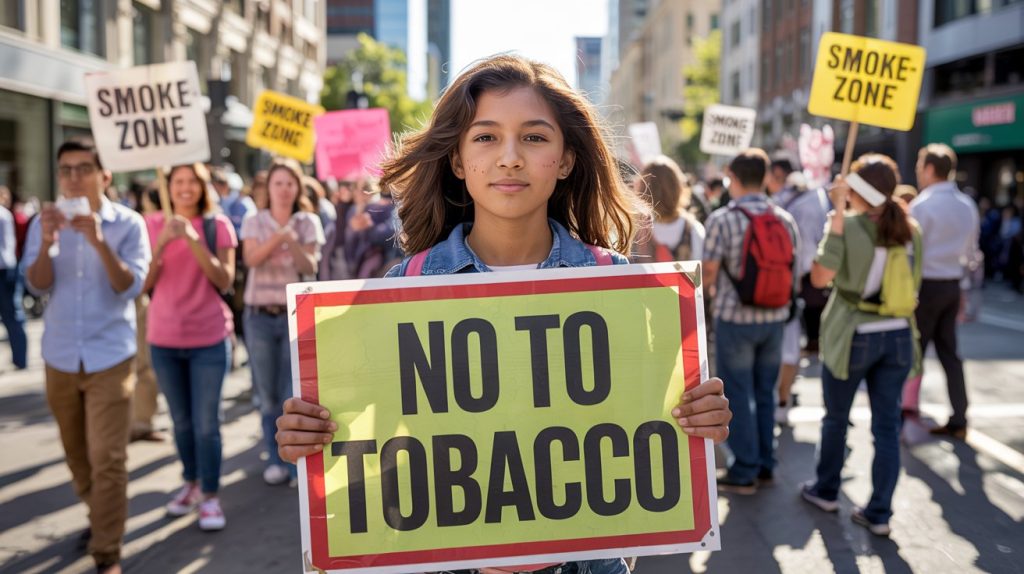
World AIDS Day – December 1
World AIDS Day, observed annually on December 1, stands as one of the most prominent and widely recognized international health days, dedicated to raising awareness about HIV/AIDS and advancing the global response to the epidemic. Established in 1988, this day serves multiple purposes: it honors the millions of lives lost to HIV/AIDS, celebrates the resilience and contributions of those living with the virus, and galvanizes collective action to address ongoing challenges in prevention, treatment, and care. Endorsed by the World Health Organization (WHO) and supported by global partners like UNAIDS, World AIDS Day is a powerful call for solidarity, compassion, and renewed commitment to ending the AIDS epidemic as a public health threat by 2030, in alignment with global health goals.
HIV/AIDS remains a significant global challenge, with millions of people living with the virus and thousands of new infections occurring daily, particularly in regions with limited healthcare access. World AIDS Day underscores the progress made over decades—such as the development of antiretroviral therapy (ART), which has transformed HIV into a manageable condition for many, and innovations like pre-exposure prophylaxis (PrEP) for prevention—while highlighting persistent barriers, including stigma, discrimination, and inequitable access to services. The day emphasizes the need for continued investment in research, testing, treatment, and education to close these gaps and ensure no one is left behind.
Each year, World AIDS Day adopts a specific theme, such as “Let Communities Lead” or “Equalize,” to focus attention on critical issues, from empowering affected communities to addressing social and structural inequalities that fuel the epidemic. These themes guide a wide range of activities worldwide, including candlelight vigils, memorial events, and educational campaigns that pay tribute to those who have died and raise awareness about living positively with HIV. Governments, health organizations, faith groups, and civil society collaborate to organize free HIV testing drives, panel discussions, art exhibitions, and social media campaigns to destigmatize the virus and promote understanding.
A core focus of World AIDS Day is combatting stigma and discrimination, which continue to deter people from seeking testing, disclosing their status, or accessing care. By sharing stories of courage and resilience, the day fosters empathy and challenges myths that perpetuate fear and exclusion. It also advocates for policies that protect the rights of people living with HIV, including access to affordable healthcare, workplace protections, and legal recourse against discrimination. Youth engagement is a priority, with initiatives aimed at equipping young people with knowledge and tools to prevent HIV and advocate for change.
World AIDS Day also serves as a platform to highlight the intersection of HIV/AIDS with broader issues, such as poverty, gender inequality, and marginalization of key populations like sex workers, men who have sex with men, and people who inject drugs. It calls for strengthened health systems, increased funding for community-led responses, and accelerated research into vaccines and cures. By uniting individuals, communities, and leaders in a shared vision, World AIDS Day inspires hope and action, reinforcing the global commitment to a future where AIDS no longer claims lives or divides societies.
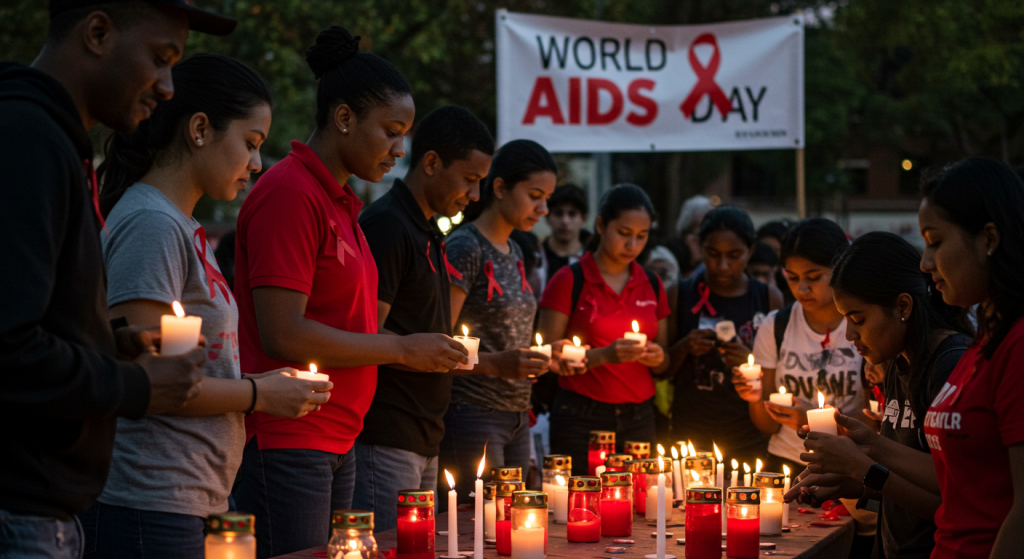
World Mental Health Day – October 10
World Mental Health Day, observed annually on October 10, is a globally recognized occasion dedicated to raising awareness about mental health issues, advocating for mental well-being as a fundamental human right, and mobilizing efforts to improve mental health care worldwide. Endorsed by the World Health Organization (WHO) and championed by organizations like the World Federation for Mental Health, this day shines a spotlight on the importance of mental health in all aspects of life—personal, social, and professional—while addressing the challenges of stigma, discrimination, and inadequate access to services. It serves as a powerful call to action for governments, communities, and individuals to prioritize mental health, foster open dialogue, and create environments where everyone can thrive.
Mental health conditions, including depression, anxiety, bipolar disorder, and schizophrenia, affect hundreds of millions of people globally, yet they remain shrouded in misunderstanding and neglect in many societies. World Mental Health Day seeks to break these barriers by promoting education, challenging myths, and encouraging empathy. It highlights the need for equitable access to quality mental health services, particularly in low- and middle-income countries where resources are often scarce, and underscores the impact of mental health on overall well-being, productivity, and social cohesion. The day also emphasizes prevention, early intervention, and the integration of mental health into primary healthcare systems.
Each year, World Mental Health Day adopts a specific theme—such as “Mental Health for All” or “Make Mental Health and Well-Being a Global Priority”—to focus global efforts on pressing issues, from workplace mental health to suicide prevention or the needs of young people. These themes guide a diverse array of activities worldwide, including public awareness campaigns, community forums, and policy roundtables. Schools, workplaces, and community centers host events like mental health workshops, mindfulness sessions, art therapy programs, and panel discussions to educate people about recognizing signs of mental distress, seeking help, and supporting others. Social media campaigns amplify these messages, encouraging individuals to share personal stories and advocate for change.
A key goal of World Mental Health Day is to reduce stigma, which often prevents people from seeking help or disclosing their struggles. By fostering open conversations, the day creates safe spaces for individuals to discuss mental health without fear of judgment, helping to normalize these topics across cultures. It also advocates for inclusive policies, such as increased funding for mental health programs, training for healthcare providers, and workplace initiatives that promote well-being, like flexible hours or counseling services. Special attention is given to vulnerable groups, including youth, refugees, and those affected by conflict or poverty, who face heightened risks of mental health challenges.
World Mental Health Day also explores the intersection of mental health with broader societal issues, such as gender inequality, climate change anxiety, and the effects of digital technology on well-being. It calls for multisectoral collaboration—among governments, NGOs, private sectors, and communities—to build resilient mental health systems and supportive environments. By inspiring collective action and empowering individuals to prioritize their mental health, this day drives momentum toward a world where mental well-being is valued, protected, and accessible to all, fostering hope and healing on a global scale.

World Immunization Week – Last Week of April
World Immunization Week, observed annually during the last week of April, is a globally coordinated effort led by the World Health Organization (WHO) to promote the life-saving power of vaccines and advocate for their use to protect individuals of all ages from preventable diseases. This week-long campaign underscores the critical role of immunization as one of the most cost-effective public health interventions, preventing millions of deaths annually and contributing to global health, well-being, and socioeconomic development. By raising awareness about the importance of vaccines, World Immunization Week seeks to ensure that everyone, everywhere has access to immunization, advancing the vision of a world free from vaccine-preventable illnesses.
Vaccines protect against diseases such as measles, polio, tetanus, influenza, and cervical cancer caused by human papillomavirus (HPV), among others, saving countless lives and reducing the burden on healthcare systems. However, challenges like vaccine hesitancy, misinformation, and disruptions—exacerbated by the COVID-19 pandemic—have led to declines in routine immunization rates in many regions, leaving millions of children and adults vulnerable. Recent themes of World Immunization Week, such as “The Big Catch-Up” or “Vaccines for All,” have focused on addressing these setbacks by urging countries to restore and accelerate vaccination programs, prioritize missed doses, and reach underserved communities to close immunity gaps.
Throughout the week, a wide range of activities unfolds globally to engage governments, health organizations, communities, and individuals. These include public awareness campaigns, vaccination drives, educational workshops, and policy dialogues aimed at building trust in vaccines and highlighting their safety and efficacy. Schools, clinics, and community centers host events to inform parents and caregivers about the importance of adhering to immunization schedules, while healthcare workers are trained to strengthen vaccine delivery systems. Social media campaigns amplify these efforts, countering misinformation and sharing success stories of how vaccines have eradicated diseases like smallpox and nearly eliminated polio.
World Immunization Week also emphasizes equity, advocating for stronger health systems to ensure that vaccines reach remote, marginalized, and conflict-affected populations. It calls for increased investment in research and innovation, such as developing new vaccines and improving cold chain logistics to maintain vaccine potency in resource-limited settings. The campaign highlights the importance of global collaboration, with initiatives like Gavi, the Vaccine Alliance, and partnerships between governments and NGOs playing a pivotal role in expanding access.
Beyond technical advancements, the week fosters community engagement, encouraging individuals to take responsibility for their health by staying up-to-date on vaccinations and advocating for immunization in their circles. It also addresses broader issues, such as the role of vaccines in combating antimicrobial resistance and preparing for future pandemics. By uniting stakeholders in a shared mission, World Immunization Week builds momentum toward achieving universal immunization coverage, reinforcing the message that vaccines work, protect, and connect us in the pursuit of a healthier, more resilient world.
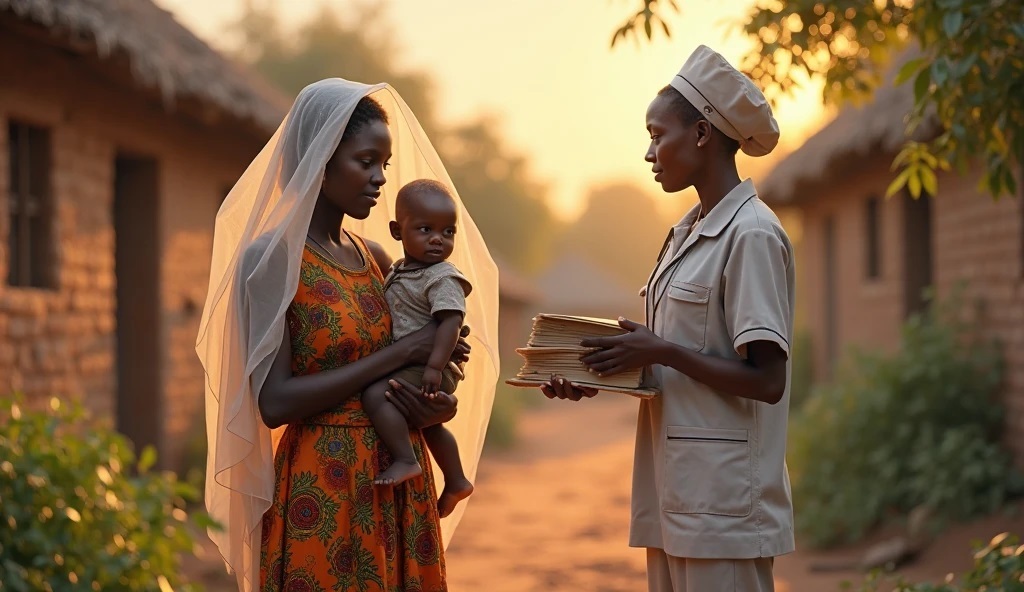
Conclusion
The World Health Organization’s Official Global Health Days collectively form a vital framework for advancing public health on a global scale, addressing some of the most pressing health challenges of our time. From World Health Day’s focus on universal health priorities to World Immunization Week’s emphasis on life-saving vaccines, each observance serves as a catalyst for awareness, action, and collaboration. These days unite diverse stakeholders—governments, health organizations, communities, and individuals—in a shared commitment to tackle issues like tuberculosis, malaria, tobacco use, HIV/AIDS, mental health, and more. By fostering education, reducing stigma, and advocating for equitable access to care, they drive progress toward healthier, more resilient societies. Together, these observances underscore the power of global solidarity and innovation in building a future where everyone can achieve the highest standard of health and well-being, leaving no one behind.
